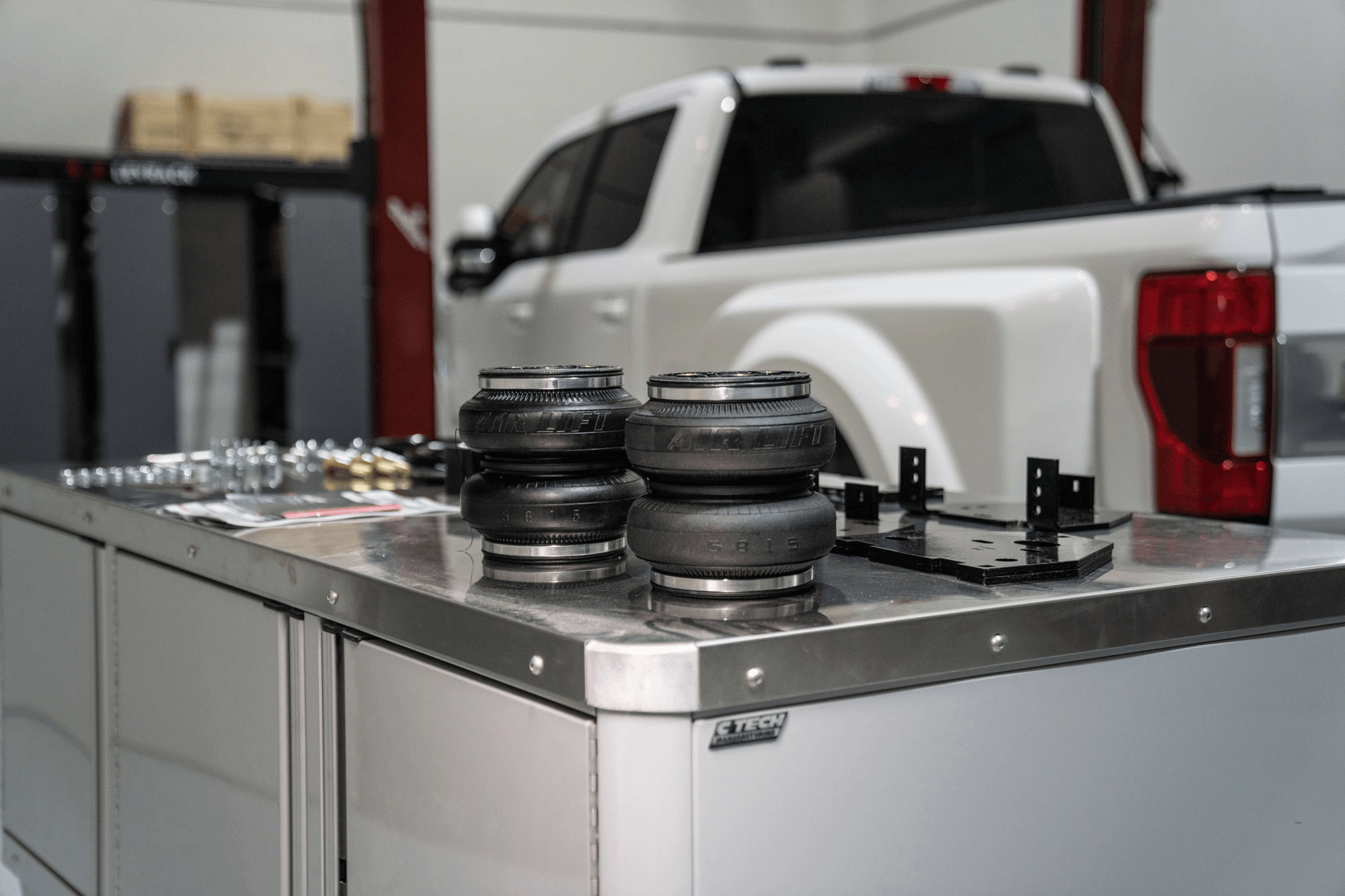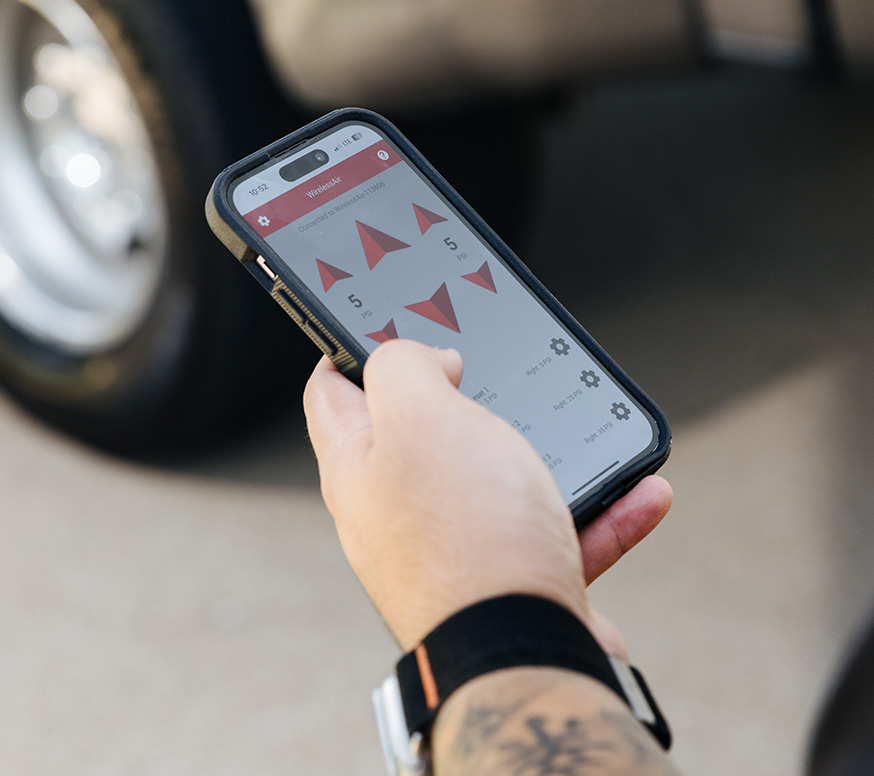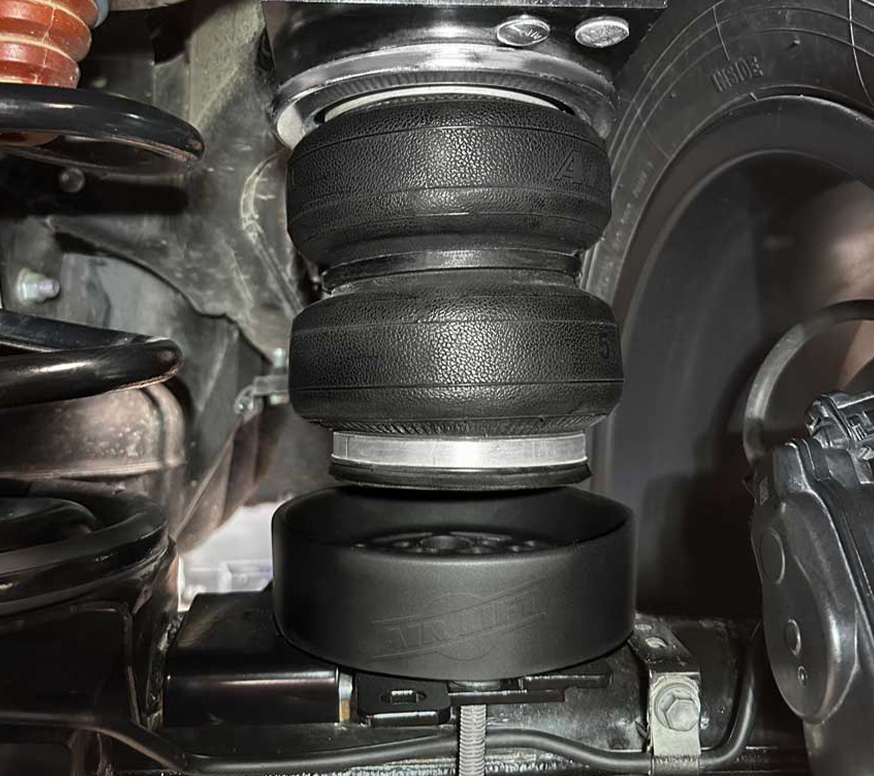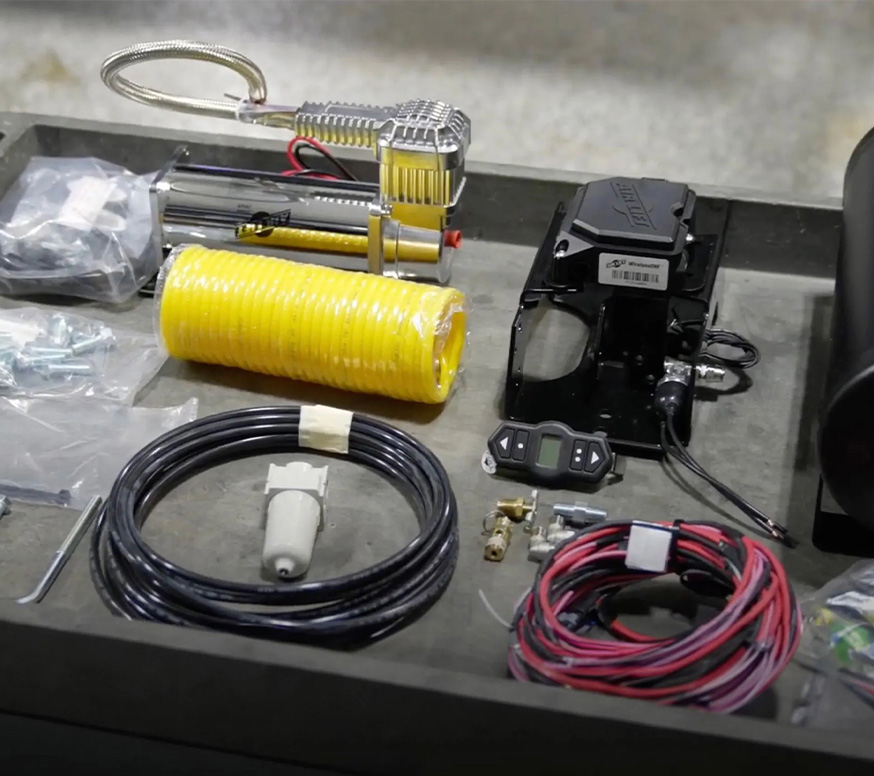
Leveling Capacity and GVWR
1/20/2014
One of the most common questions we get asked is “Do these kits make it so that I can tow more?”
Short answer? No. Adding and Air Lift air suspension system will not change the manufacturer’s Gross Vehicle Weight Rating.
Long answer? “Leveling capacity” does not refer to the same thing as “Gross Vehicle Weight Rating.”
There is some confusion in the marketplace around how these two differ, and, whether you’re towing a trailer or driving a heavily laden vehicle, it’s important to understand what they mean and the difference between the two.
Let’s start with the Gross Vehicle Weight Rating (GVWR), or Gross Vehicle Mass (GVM) – these terms refer to the maximum operating weight of a vehicle as specified by the manufacturer. This includes the vehicle’s chassis, body, engine, engine fluids, fuel, accessories, driver, passengers, and cargo, but excludes the weight of any trailers. On vehicles in the United States, the GVWR easily can be found alongside other vehicle technical specifications on the Vehicle ID Plate, located on the interior of the B-pillar. There’s also a Gross Combined Weight Rating (GCWR) which refers to the total mass of a vehicle, including all trailers.
GVWR and GCWR both are used to specify weight limitations and restrictions. These are extremely important and should never be exceeded.
“Leveling capacity” refers to how much weight the air springs can lift when inflated to max PSI.
So take our LoadLifter 5000 air springs, for example. This application is rated to up to 5,000 lbs. of load-leveling capacity, meaning that they can easily level a load up to 5,000 lbs., countering squat and bottoming out, returning the vehicle to a level stance, fixing several ride and handling issues.
Where people tend to get confused is thinking that the leveling capacity that air springs provide can be added onto the GVWR.
We’ll give you an example:
It would be totally acceptable to, say, fit a 900 lb. snow plow to a truck rated to carry one ton, as the GVWR would not have been exceeded. However, the front end of the vehicle will squat quite severely, creating several ride and handling problems for the driver.
That’s where Air Lift air springs and their leveling capacity come it. Adding an application that provides at least 1,000 lbs. of load-leveling capacity will return the vehicle to level and solve the problems faced by hauling the heavy weight.
However, should the truck also also be loaded with a 700 pound payload the vehicle would now exceed the GVWR. So, even if the vehicles ride height was corrected using Air Lift’s adjustable air springs in the front and/or rear, the vehicles GVWR would still have been exceeded. A vehicle under these conditions would not be safe to operate on the roads and puts a dangerous amount of stress on stock components like axles, brakes, powertrain, and more.









